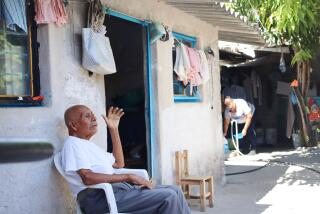Column: As they return to their homes, Montecito evacuees know they could be forced to leave again
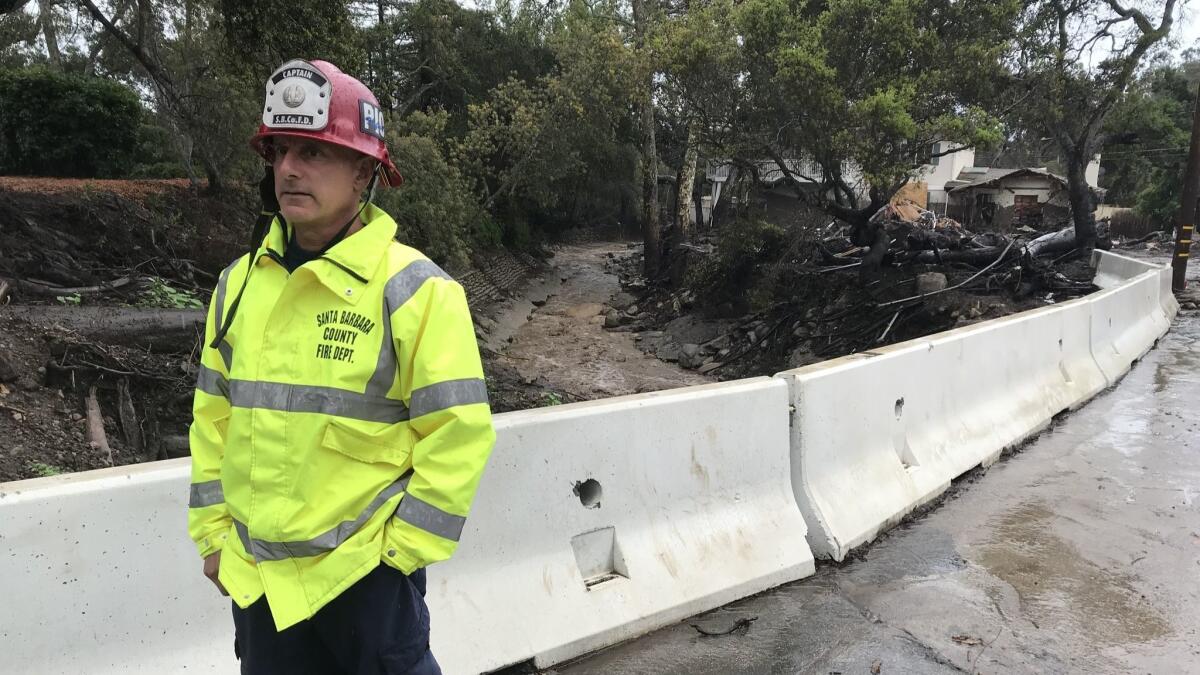
Imagine being forced out of your home every time there’s a heavy rain.
For some Montecito residents, who have gone through five evacuations since December, the routine is getting old. Still, most are not resisting.
“Yes, it’s a nuisance,” said Maria Luisa Carroll, 85, who was in the lobby of the Hyatt Centric hotel Wednesday in Santa Barbara with her Tibetan spaniel, Gholi, waiting to be picked up by her son. “I have a very bad back and to have to pack things all the time, it’s painful. But you take some pills. Better safe than sorry.”
Most people, like Carroll, were able to get to hotels or stay with family. Relatively few had availed themselves of the Red Cross shelter at the Earl Warren Showgrounds in Santa Barbara. One of those who opted for the shelter was a neighbor of Carroll’s, 78-year-old Toby Tarquin.
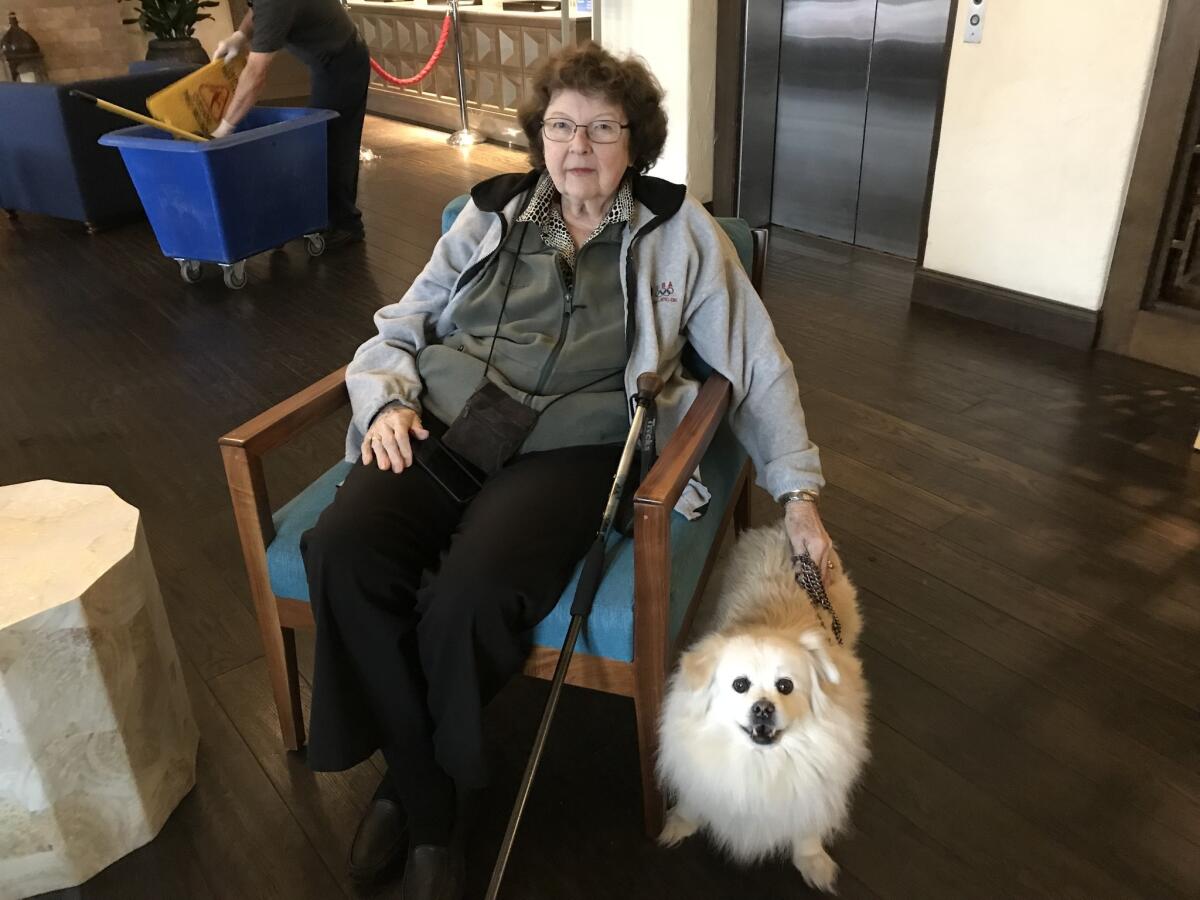
On East Valley Road, in the middle of the mandatory evacuation zone, Tarquin lives a mile north of Carroll and very close to Oprah Winfrey, who, of course, has a mega-mansion on 42 acres. Tarquin supports herself with Social Security and described her leaky two-bedroom cottage as a “teardown.” Her property has 40 gorgeous oak trees and is strewn with boulders from ancient debris flows.
Montecito is known as a playground for the rich, but many of its older residents came to the area decades ago and continue to live modestly among the opulence of their newer neighbors.
During the Thomas fire in December, Tarquin had spent two weeks with her son in Westlake. But this week, she opted to stay at the fairgrounds, which is also the staging area for emergency crews and much of the heavy equipment that will be put to use if the fire-scarred mountains above Santa Barbara and Montecito give way again.
And considering that she’d just spent the night on a not-very-comfortable cot, she was surprisingly upbeat.
“I have evacuation goofiness,” she said. “I’m just a little punchy from lack of sleep.”
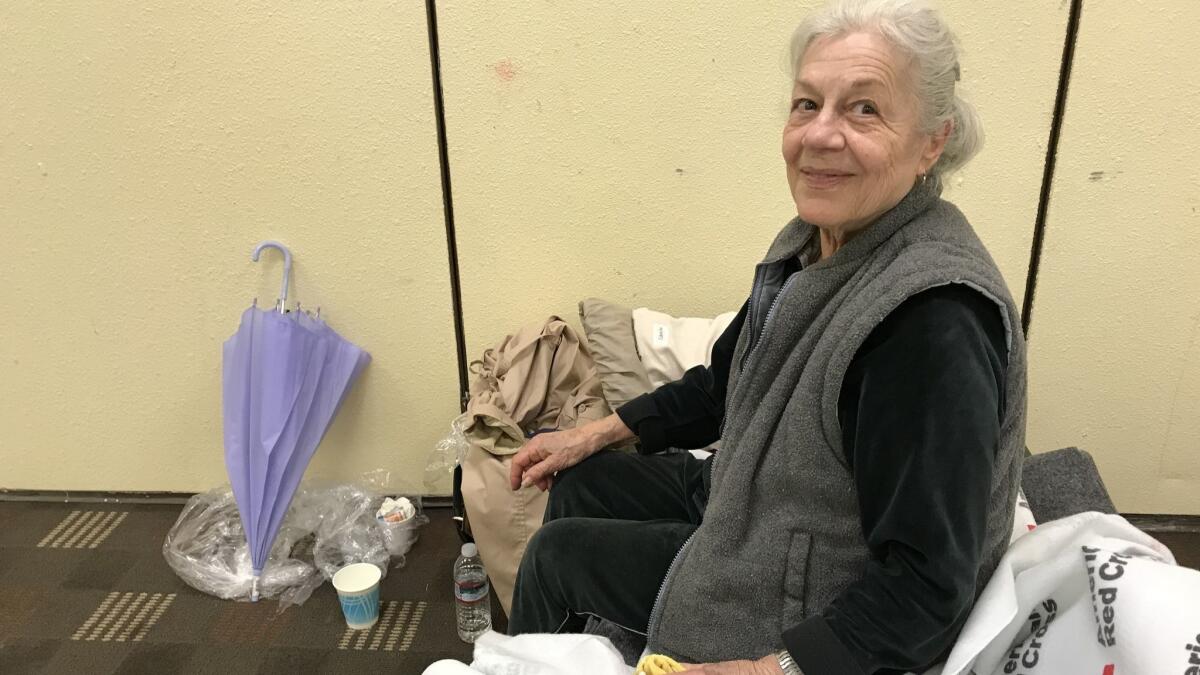
More important, she was buoyed by some new friendships. Over the course of a day and night at the shelter, she had bonded with two other women her age. Despite invitations and pleas from their adult children, none of the women planned to leave the shelter.
“Our kids want to take care of us, but we’ve got this sense of independence,” Tarquin said. “There are three of us and we all have the same color hair and the same hairdresser: none. We’ve all raised the kids, couple of dead husbands. The stories I am hearing from these women are amazing. It’s senior lady camp is all I can say.”
::
When you can do nothing else, telling stories is surely the best way to cope. And everywhere you go around here, people have dramatic stories.
On Hot Springs Road, about a mile from Tarquin’s cottage, I found Santa Barbara County Fire Capt. David Zaniboni with a crew from the Weather Channel. Behind him, Montecito Creek was rising slowly, but the water was moving swiftly and unobstructed toward the ocean, a positive sign.
On Jan. 9, he told me, he’d been awakened by a phone alert. Multiple structures were on fire in Montecito.
“I was like, ‘That’s weird because it’s pouring rain,’” he said.
The debris flow had broken gas mains, causing explosions and some fires.
Half an hour before Zaniboni’s phone went off, Tarquin had a similar disconnect. She’d awakened to a bright orange sun blazing outside her window.
“I thought: ‘Oh, my gosh, I overslept. It’s noon.’”
When she walked into her kitchen, though, a battery-powered clock showed the time as 3:30 a.m.
“I look outside and the whole house is lit like there are spotlights,” Tarquin said. “I open the front door and my daughter comes out and says: ‘Mom, close it! It’s the bomb!’ It looked like Hiroshima.”
Could it happen again?
“Until we get some regrowth in the mountains,” Zaniboni said, “this could go on for the next couple years.”
::
An estimated 30,000 people had evacuated for this storm.
I wondered if some of them — especially in neighborhoods that were devastated by the debris flow in January — were experiencing post-traumatic stress from the repeat evacuations and fears of another cataclysmic event.
“There is an exhaustion vibe, and I think the PTSD is building,” said Roberta Ainciart, a retired psychotherapist and leader of Santa Barbara’s disaster mental health team. I bumped into her at the fairgrounds shelter, where she was available to help anyone in distress.
“We have a very tired community that has really come together. Overall, I think people’s mental health is pretty good.” (The people who are likely to be suffering severely, she said, are the ones who have lost loved ones or homes, or both.)
People have lost jobs, businesses have taken a big hit, and the best-laid plans have been upended. Ainciart’s daughter, for instance, had scheduled her wedding for April 28 at the Biltmore hotel, where her parents tied the knot 33 years ago. But the Biltmore, damaged in the debris flow, remains closed until June 1, and the family had to scramble for a new location.
“The save-the-date cards had already gone out,” Ainciart said. “We had to plan a whole second wedding.”
She hastened to point out that this was an inconvenience, not a tragedy.
::
After the January debris flow, Tarquin camped out with her daughter at home for three weeks — with no electricity, gas or water. If they had left, they rightly feared, they would not have been allowed to return.
Supermarkets were closed. But the Village Cheese and Wine Store in Montecito’s Upper Village, a stone’s throw away, was feeding the repair crews and residents who stuck around. “We ate a lot of cheese sandwiches,” Tarquin said. “It was like ‘Gilligan’s Island.’”
At 4 a.m. Thursday, during a hard rain, the creeks running though Montecito rose several feet. But just before noon, they had fallen again and emergency crews were optimistic the worst had passed. The evacuation order was lifted at 5 p.m. Now, things will get back to what passes for normal around here. At least until the next storm rolls in.
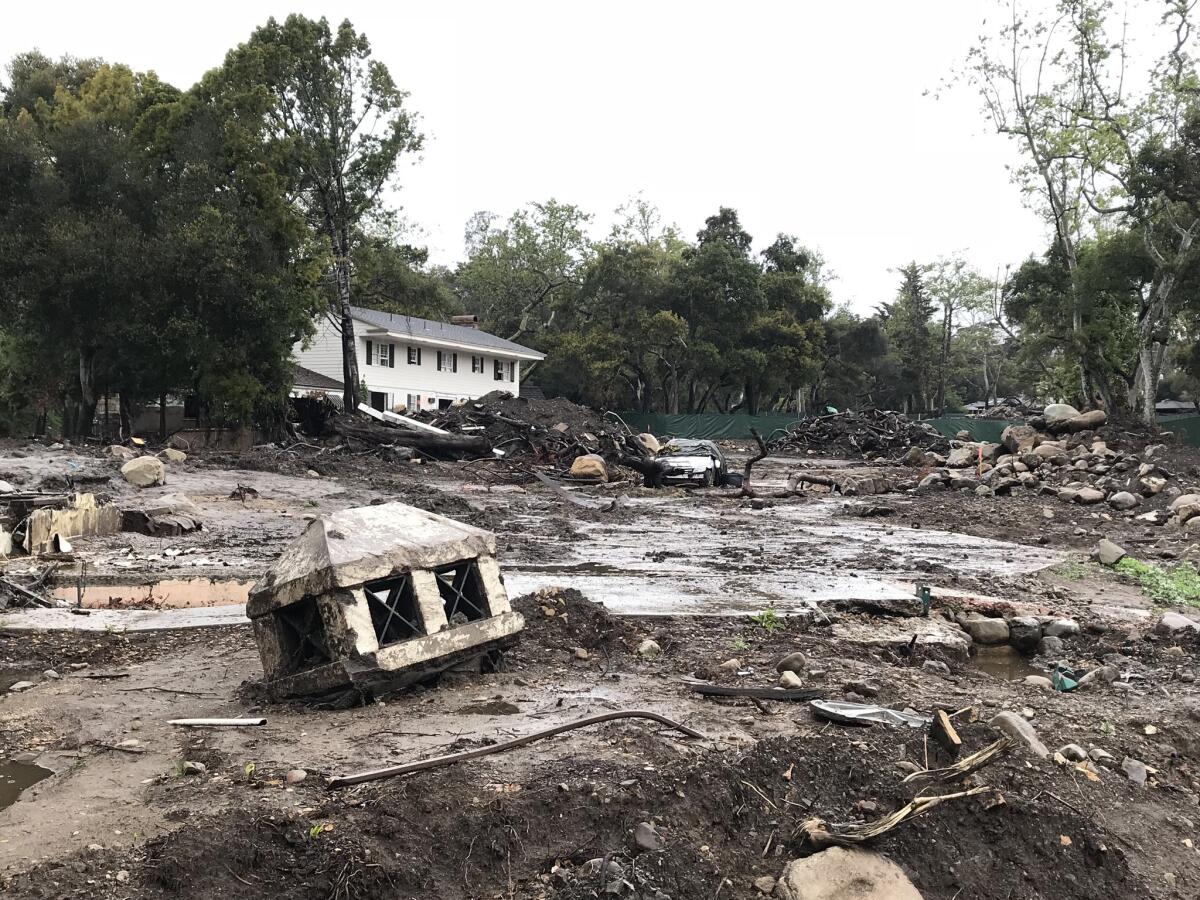
Twitter: @AbcarianLAT
UPDATES:
5:10 p.m.: This column was updated with the announcement that the evacuation order was lifted.
This column was originally published at 2:35 p.m.
More to Read
Start your day right
Sign up for Essential California for news, features and recommendations from the L.A. Times and beyond in your inbox six days a week.
You may occasionally receive promotional content from the Los Angeles Times.
